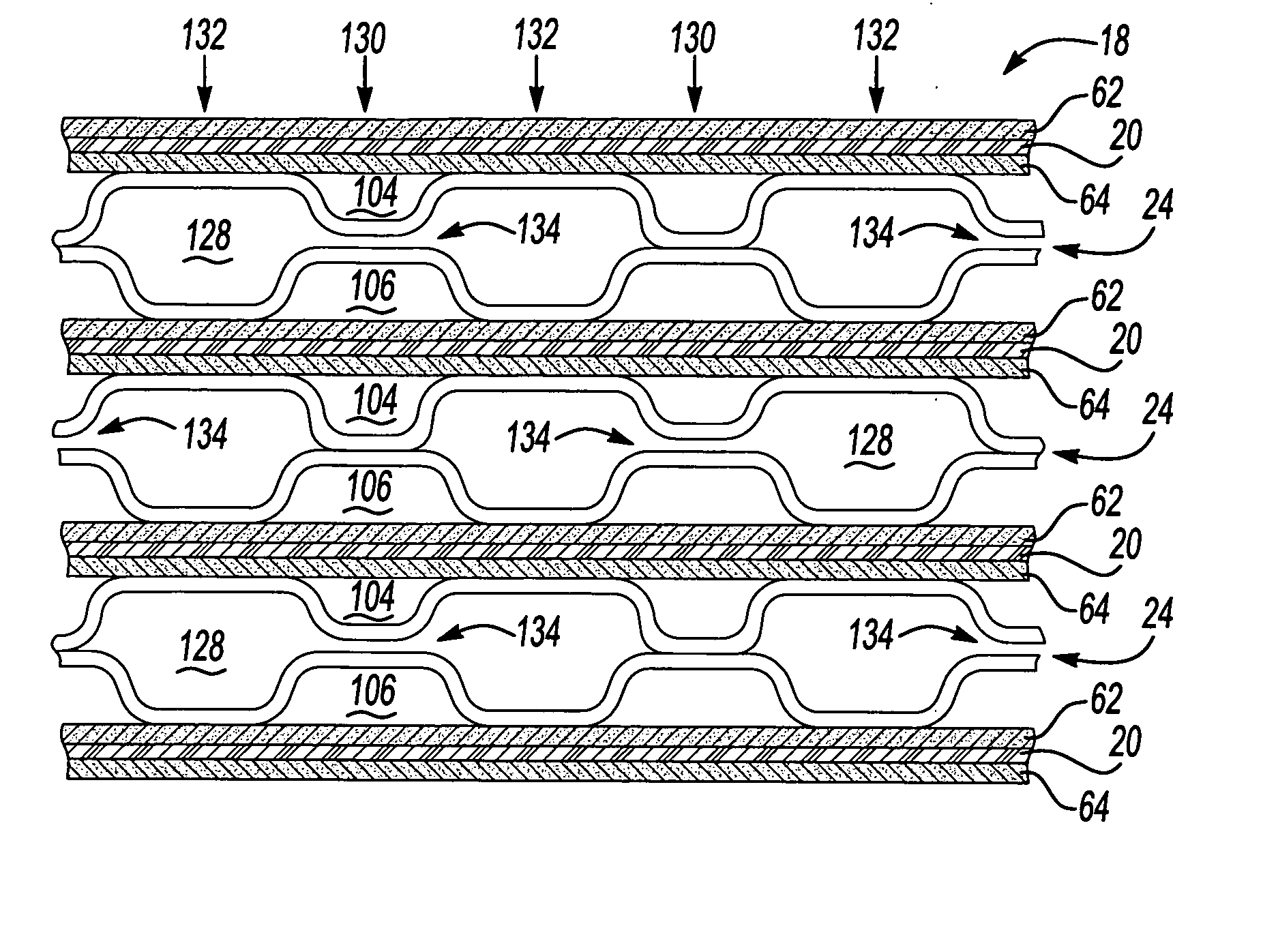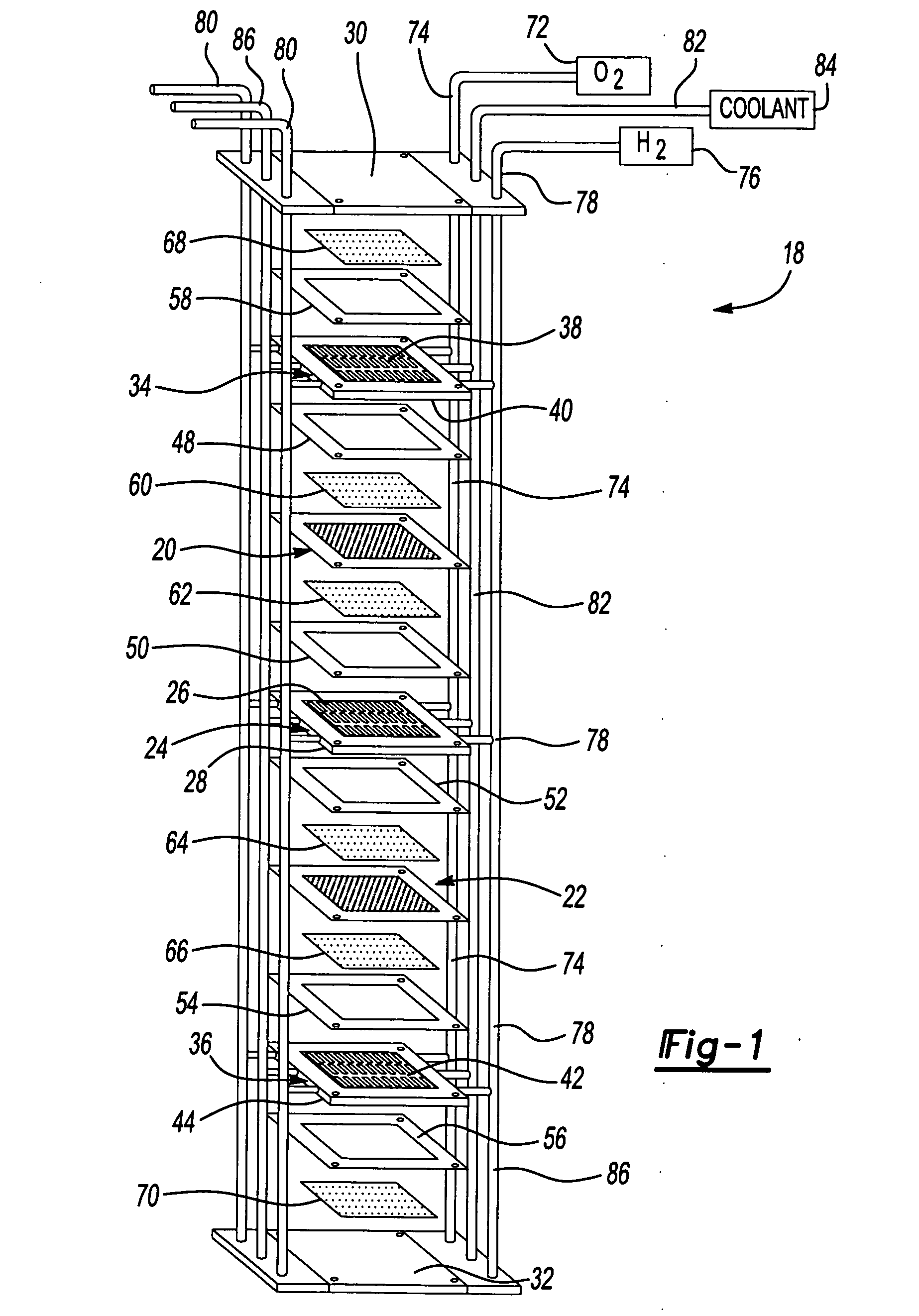Flexible bipolar plate
a bipolar plate, flexible technology, applied in the field of bipolar plates, can solve the problems of temperature change, dimensional change affecting the compressive force imparted on the fuel cell, and the level of humidification of the active element in the fuel cell
- Summary
- Abstract
- Description
- Claims
- Application Information
AI Technical Summary
Benefits of technology
Problems solved by technology
Method used
Image
Examples
example 1
EXAMPLE 1
[0033] Referring now to FIG. 5, a comparison of the stiffness of a typical prior art bipolar plate to a bipolar plate of the present invention is shown along with a stiffness of a typical diffusion media member. In the prior art bipolar plate, all opposing pairs of lands within the coolant flow field were in contact with one another and brazed together. In the bipolar plate of the present invention, every other opposing pair of lands 130 were in contact with one another and brazed together while the remaining opposing pairs of lands had a gap 134 therebetween. The typical diffusion media member was a Toray 060 paper. The bipolar plates and the Toray paper were individually compressed between two rigid surfaces and the resulting stiffness curves were generated using the finite element method. Based on this method, curves 140, 142 and 144 for the respective prior art bipolar plate, bipolar plate of the current invention, and Toray 060 paper were developed. The slopes of these...
example 2
EXAMPLE 2
[0034] To evaluate how much reduction of over compression the bipolar plate of the present invention can achieve, the contact pressure in a single cell consisting of two bipolar plates, two 0.18 mm-thick diffusion media members, and an MEA with a 0.018 mm-thick membrane was investigated. The diffusion media members were Toray 060 paper. The membrane was Gore 55 series with a swelling ratio of 0.38 in the thickness direction. The study was performed using the finite element method. After the cell was compressed to 450 PSI, the membrane was allowed to fully hydrate and swell while the two rigid surfaces on either side of the cell were fixed in place. It was found that an additional contact pressure of 45 PSI occurred in the land area after the membrane was fully hydrated. When the same analysis was performed using a conventional prior art bipolar plate, additional contact pressure of 110 PSI was found. The results of this test suggest that the use of a bipolar plate of the pr...
PUM
 Login to View More
Login to View More Abstract
Description
Claims
Application Information
 Login to View More
Login to View More - R&D
- Intellectual Property
- Life Sciences
- Materials
- Tech Scout
- Unparalleled Data Quality
- Higher Quality Content
- 60% Fewer Hallucinations
Browse by: Latest US Patents, China's latest patents, Technical Efficacy Thesaurus, Application Domain, Technology Topic, Popular Technical Reports.
© 2025 PatSnap. All rights reserved.Legal|Privacy policy|Modern Slavery Act Transparency Statement|Sitemap|About US| Contact US: help@patsnap.com



